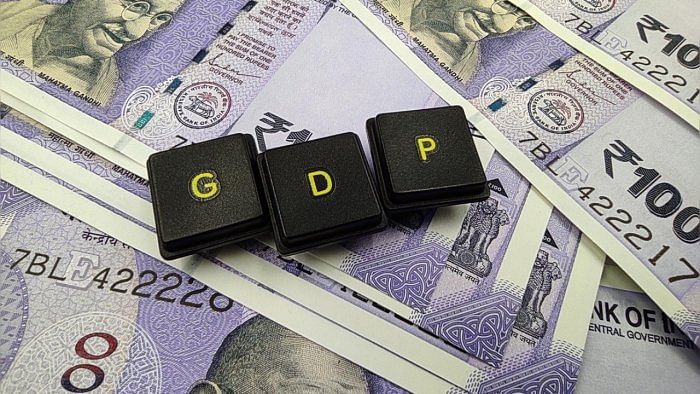
It was the services sector, which grew by a high 10.3%, that contributed most to the growth.
Credit: iStock Photo
The 7.8% growth registered by the Indian economy in the first quarter of the ongoing financial year is creditable in the present circumstances, both in relative and absolute terms. The growth rate, as per data released by the National Statistical Office (NSO), was only marginally lower than the RBI’s most recent estimate. The RBI had projected the economy to grow at 8%. It had also predicted that the momentum would slow down after the first quarter and GDP growth for the whole financial year would be about 6.5%. This is still a major performance and India would still be the fastest growing major economy. It should also be noted that the improvement in numbers is despite the fall in exports compared to the same period last year and the rise in imports.
It was the services sector, which grew by a high 10.3%, that contributed most to the growth. The industrial sector, including construction, was a laggard. Manufacturing, at 4.7%, has performed only marginally higher than during the last quarters, and perhaps reflects the fall in exports. The construction sector, which had started gaining momentum after the pandemic, slowed down, though it still showed a 7.9% growth. This is in contrast to the performance of cement and steel, which grew by 12.2% and 10.2% respectively. Trade, hotels, transport and communication showed good growth at 9.2%, and the financial, real estate and professional services sector grew at 12.2%. The increase in private consumption and the growth in investment activity were encouraging signs. Private consumption, which is a driver of growth, grew by 6%, as against 2.5% in the second half of last year. Investment activity also grew at a healthy 8%, though that was less than the 8.5% growth in the second half of last year.
But it will not be possible to sustain this growth in the coming months. Inflation, which continues to be high, can cut down household spending and demand. Agriculture will most certainly be impacted by the deficient monsoon and other climate issues. Rural demand may be affected by inflation and a fall in farm incomes. The global economic slowdown is also going to be an adverse factor because trade will be adversely affected. The RBI expects growth to slow down to 6.5% in the second quarter, 6% in the third quarter and 5.7% in the fourth quarter. But it is possible that growth will see further erosion, too. Politics will dominate the coming months and its impact on the economy cannot be predicted now.